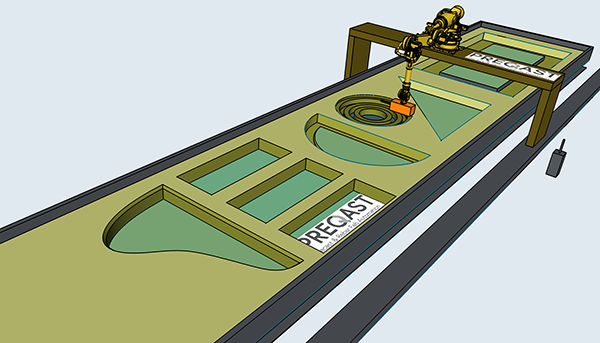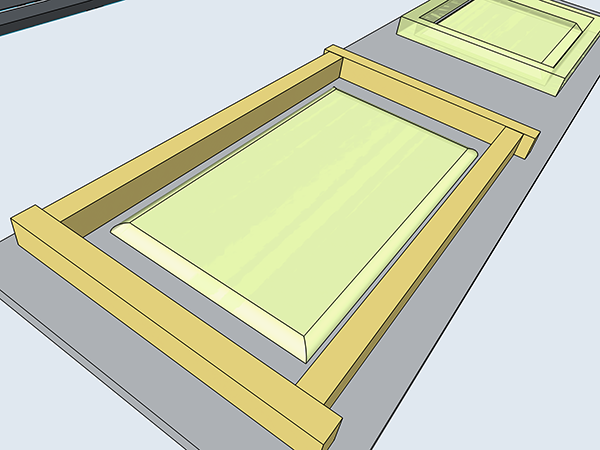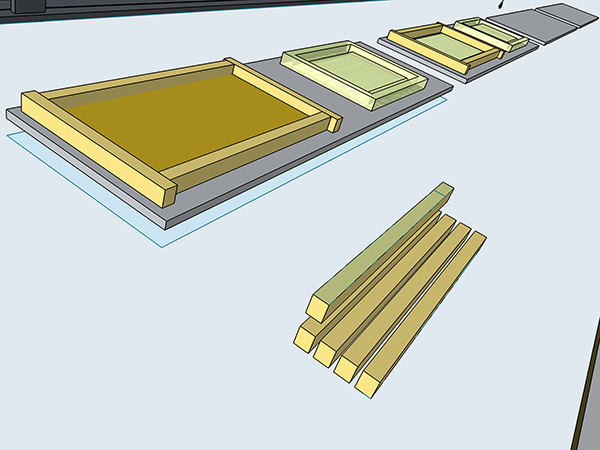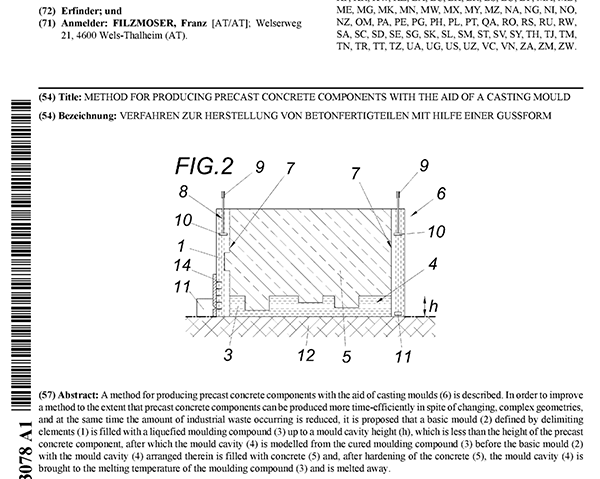
Revolution in the production of precast concrete elements - 3D wax formwork PREQAST
Technology transfer/ Licensing
In the production of precast concrete elements, solid moulds and formwork made of wood, steel, aluminium or plastic are commonly used today. The new PREQAST technology uses wax moulds, cured or liquid. The mould is milled. Concrete is poured in. Hardened. The formwork is removed by heating. The finished concrete element is lifted off. The liquid wax is reprocessed and 100% reused in the next product cycle.
In the production of precast concrete elements, solid forms and formwork made of wood, steel, aluminium or plastic are commonly used today. The new PREQAST technology uses wax moulds, cured or liquid. The mould is milled. Concrete is poured in. Hardened. The formwork is removed by heating. The finished concrete element is lifted off. The liquid wax is reprocessed and 100% reused in the next product cycle.
A new and sustainable solution
A balcony slab usually has a thick volume section and a raised edge.
The cut-out (shape) must correspond to an upside down model. The mould then only requires a cover of at least 2-4 cm of the difference in height between the total thickness of the slab on the ground. This is achieved by adding a liquid wax.
The edges of the plate are defined by wax bars and a length that exceeds the length or width of the plate.The lines on which the wax bars are to be placed are projected onto the table by a line laser located on the ceiling.
The wax bars are arranged and fixed at the corners in such a way that the space formed for the plate to be cast is made tight.
The outlines of the plate defined by the wax bars are smaller than the original outlines of the plate. This means that the edges of the mould can also be milled.
Now liquid technical (CNC-machinable) wax with a melting point of approx. 70° is poured into the wax mould, but only in a quantity that corresponds to the height of the raised edges of the balcony.
Entschalen: Nachdem der Beton erhärtet ist, wird die Form auf über 70° erwärmt und das Wachs (Wachsbalken und eingebrachtes Flüssigwachs) schmilzt und fließt über vorgesehene Öffnungen vom Schaltisch ab, wird gesammelt und zu 100% wieder für die weitere Verwendung aufbereitet.
Die fertige Betonplatte kann mittels Kran an den Aufnahmeösen abgehoben werden.
Der Schaltisch oder die Paletten werden gereinigt und ein neuer Produktionszyklus kann beginnen.
Patent: WO2020093078A1
Contact:
Franz Filzmoser
Innovation Network Austria GmbH
E-Mail: ,
Tel.: +43 7242224110
www.inna.at
Latest literature publication DOWNLOAD
Patent description




